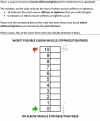Sheffield Adaptive Patterned Electrical Stimulation (SHAPES) Therapy for Post Stroke Arm spasticity: study protocol for a 3-arm, a partially blinded, randomised controlled trial
- PMID: 39522015
- PMCID: PMC11549865
- DOI: 10.1186/s12883-024-03635-x
Sheffield Adaptive Patterned Electrical Stimulation (SHAPES) Therapy for Post Stroke Arm spasticity: study protocol for a 3-arm, a partially blinded, randomised controlled trial
Abstract
Introduction: Post stroke elbow spasticity (PSES) affects over a third of individuals following stroke and negatively impacts on functional recovery, comfort and quality of life. Drug therapies have limited efficacy and unwanted side effects, botulinum toxin, although effective, is costly, and conventional electrical stimulation therapies are limited long term by habituation. We aim to investigate the efficacy of Sheffield Adaptive Patterned Electrical Stimulation (SHAPES), that delivers temporally and spatially varying pattern of electrical stimulation, against transcutaneous electrical stimulation (TENS) and standard care at reducing PSES.
Methods and design: Overall, 297 people with PSES will be randomised (1:1:1) to one of 3 arms: Standard care (no electrical stimulation), TENS (conventional patterned electrical stimulation) or SHAPES (adaptive patterned electrical stimulation). Both SHAPES and TENS are delivered using a specially designed electrical stimulation sleeve used for 60 min each day for 6-weeks. Outcome measures are completed at baseline, end of treatment (EOT 6 weeks) and then 6-weeks, 12-weeks and 24-weeks after the end of treatment. Efficacy will be determined based on the proportion of participants experiencing meaningful improvement (18%) in the 7-day Numerical Rating Scale (NRS-S) for PSES, compared between both intervention arms and standard care, and between the two intervention groups. Measures of arm motor function (Action Research Arm Test, MRC scale), and quality of life (SQoL-6D, EQ-5D) will also be measured along with a parallel health economic evaluation.
Discussion: The results of the SHAPES trial will inform management of elbow spasticity after stroke. The SHAPES intervention is a low cost, self-administered intervention for the management of spasticity that can be used repeatedly, and if found to be more effective than TENS or control has the potential to be widely implemented in the UK NHS healthcare setting. Furthermore, despite the wide use of TENS in the management of spasticity, this study will provide critically required evidence regarding its efficacy. The trial has been registered with the ISRCTN registry (ISRCTN26060261).
Keywords: Electrical stimulation; RCT; SHAPES; Spasticity; Stroke; TENS.
© 2024. Crown.
Conflict of interest statement
The authors declare no competing interests.
Figures



Similar articles
-
Effect of Transcutaneous Electrical Nerve Stimulation on Spasticity in Adults With Stroke: A Systematic Review and Meta-analysis.Arch Phys Med Rehabil. 2019 Apr;100(4):751-768. doi: 10.1016/j.apmr.2018.10.016. Epub 2018 Nov 16. Arch Phys Med Rehabil. 2019. PMID: 30452892
-
Effects of transcutaneous electrical nerve stimulation alone or as additional therapy on chronic post-stroke spasticity: systematic review and meta-analysis of randomized controlled trials.Disabil Rehabil. 2020 Mar;42(5):623-635. doi: 10.1080/09638288.2018.1503736. Epub 2018 Oct 16. Disabil Rehabil. 2020. PMID: 30326752
-
Efficiency of Neuromuscular Electrical Stimulation and Transcutaneous Nerve Stimulation on Hemiplegic Shoulder Pain: A Randomized Controlled Trial.Arch Phys Med Rehabil. 2018 Sep;99(9):1730-1739. doi: 10.1016/j.apmr.2018.04.020. Epub 2018 May 17. Arch Phys Med Rehabil. 2018. PMID: 29777714 Clinical Trial.
-
A single trial of transcutaneous electrical nerve stimulation (TENS) improves spasticity and balance in patients with chronic stroke.Tohoku J Exp Med. 2013 Mar;229(3):187-93. doi: 10.1620/tjem.229.187. Tohoku J Exp Med. 2013. PMID: 23419328 Clinical Trial.
-
Comparison of transcutaneous electrical nerve stimulation (TENS) and functional electrical stimulation (FES) for spasticity in spinal cord injury - A pilot randomized cross-over trial.J Spinal Cord Med. 2018 Jul;41(4):397-406. doi: 10.1080/10790268.2017.1390930. Epub 2017 Oct 25. J Spinal Cord Med. 2018. PMID: 29067867 Free PMC article. Clinical Trial.
References
-
- Jørgensen H, Nakayama H, Raaschou H, et al. Outcome and time course of recovery in stroke. Part I: outcome. The Copenhagen stroke study. Arch Phys Med Rehabil. 1995;76(5):399–405. - PubMed
-
- Lance JW. The control of muscle tone, reflexes, and movement: Robert Wartenberg Lecture. Neurology. 1980;30:1303–13. - PubMed
-
- Lundström E, Terént A, Borg J. Prevalence of disabling spasticity 1 year after first-ever stroke. Eur J Neurol. 2008;15:533–9. - PubMed
Publication types
MeSH terms
Grants and funding
- 201642/National Institute for Health and Care Research Invention for Innovation (i4i)
- 201642/National Institute for Health and Care Research Invention for Innovation (i4i)
- 201642/National Institute for Health and Care Research Invention for Innovation (i4i)
- 201642/National Institute for Health and Care Research Invention for Innovation (i4i)
- 201642/National Institute for Health and Care Research Invention for Innovation (i4i)
- 201642/National Institute for Health and Care Research Invention for Innovation (i4i)
- 201642/National Institute for Health and Care Research Invention for Innovation (i4i)
- 201642/National Institute for Health and Care Research Invention for Innovation (i4i)
- 201642/National Institute for Health and Care Research Invention for Innovation (i4i)
- 201642/National Institute for Health and Care Research Invention for Innovation (i4i)
- 201642/National Institute for Health and Care Research Invention for Innovation (i4i)
LinkOut - more resources
Full Text Sources
Medical

